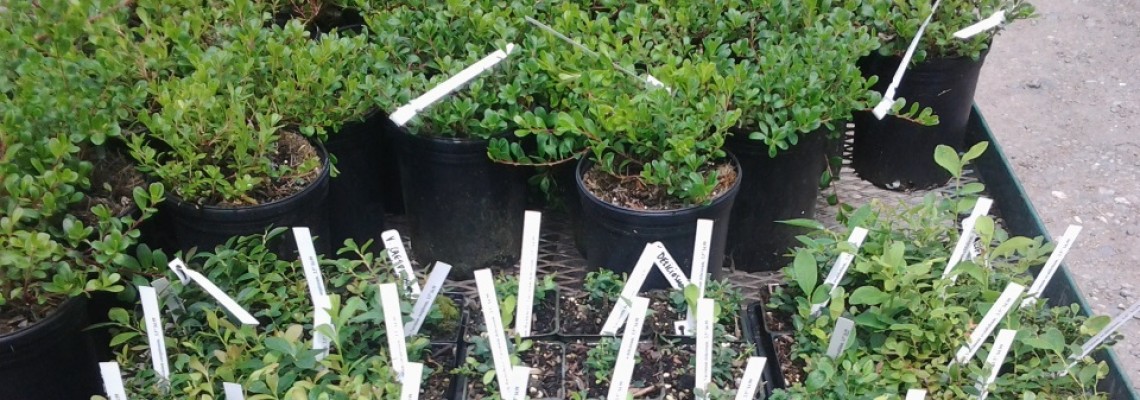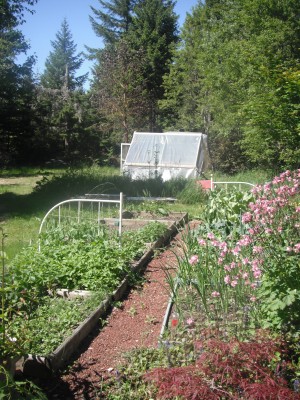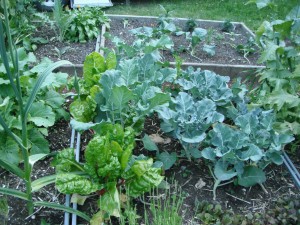Mary, Mary, Quite Contrary, How Does Your Garden Grow?
In the1880 U.S. Census, the occupations of 41% of the Heads of Households were listed as Farmer, Farm Laborer or Farming. Of those that had other occupations, you can bet that most of the wives or other members of the family had kitchen gardens and livestock. Growing and preserving food took a lot of time and energy. When my grandparents moved to California in the 1920’s, my grandmother put all her preserves in the back of the car and covered them with a blanket to make a place for my uncles to take their naps. During the depression, she canned 50 quarts of peaches from a tree in the backyard.
In today’s economy, most people purchase the food they eat. Although much of our food is grown in the United States, more and more of it is from other countries. As I attempt to reduce my own carbon footprint, I have been paying more attention to where my food originates. As a Washingtonian, I was dismayed to discover that some packages of dried apple snacks came from China. Isn’t it contrary or even dangerous to our own survival, when we build warehouses on our best farmland, to house imports from other countries?
Across our country, many residents are challenging municipal ordinances that prohibit the raising of farm animals. My mom was a city girl from southern California, but her family always had chickens.
Farming and gardening is labor intensive, but it is worth it if you can grow some of your own fresh, pesticide and preservative-free, animal products, (such as eggs), fruits and vegetables.
If you haven’t started a garden yet this year, you may still be able to buy starts at a nursery or a farmer’s market—or start planning a winter garden. Use a seed catalog to help you plan. Territorial Seeds from Oregon, specialize in varieties that grow in the northwest. When deciding what to grow, you want to grow fruits or vegetables that will yield a crop that is higher in quality and value than what you could buy in the store. High quality vegetable crops would include: asparagus, Brussels sprouts, onions, peas, summer squash, or tomatoes; high value crops would include: broccoli, cucumbers, leaf lettuce, peppers, or rhubarb. Fruits that are easy to grow include: strawberries, blueberries, raspberries, and plums. Raintree Nursery in Morton specializes in fruits that grow in the northwest. –Most importantly you need to grow what your family likes and will eat. As you become more experienced as a gardener, you will learn what grows best for you in your location.
You can preserve your produce by freezing, canning or drying. Most vegetables need to be blanched (plunged in boiling water for a few minutes) before freezing; otherwise enzymes can make them bitter. Canning takes a bit more knowledge, but fruits like peaches and pears are not difficult, and even pickles are fairly easy. For jams and jellies, just follow the recipes on the pectin package. A good book on food preservation will have recipes and important safety tips.
If you do not have the time for your own garden, shop at a farmer’s market to support local growers, or pay attention to where the produce comes from when you shop at your local grocery store. Some farmers are creating co-ops—where customers can pay to have fresh, locally grown produce delivered to their house every week.
Eating locally, sustainably, grown food will help to ensure that we will continue to have access to the sources of energy that sustains our bodies!
(This article was first published in the Peninsula Gateway on Dec 30, 2009 as Value Makes Farming Worthwhile)
Feature Photograph: My raised-bed vegetable garden & cold frame in the background.



